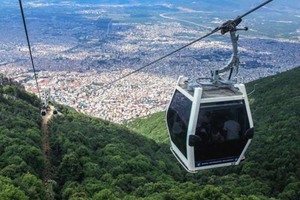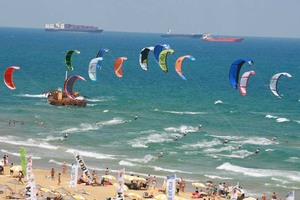Edirne TURKEYS TOURS
EDIRNE (ADRIONOPLE)
Edirne is a historical city and has preserved its importance and value throughout history. It is known that Edirne was founded by the Thracians who migrated from Central Asia and settled here in ancient times. Later, Alexander the Great included these places within the borders of the Macedonian Empire These lands, which were dominated by the Romans, fell into the area of Eastern Byzantium with the division of the Roman Empire into two in 395.
The city was rebuilt by the Roman Emperor Hadrianus II, and also was named after him (Hadrianapolis). The Avar Turks besieged this place in 586, but they returned without getting it. The Bulgarian Turks managed to capture the city in 914. This city, which later passed to Byzantium and was besieged for the second time by the Pecheneg Turks in 1050 and 1078, was finally conquered by Sultan Murat I in 1361 and became the throne (head) city of the Ottoman Empire and was the capital city for 92 years until Istanbul was conquered in 1453.Those years were the most glorious days of its history.
Edirne entered a period of decline in 18th.century. Two big fires in 1745 and 1751 destroyed big part of Edirne.
The first occupation disaster of Edirne was that the Russians entered the city and stayed for a few months on August 22, 1829. Edirne also witnessed the 13-month occupation of the Russians on January 20, 1887, four months of the Bulgarians on March 26, 1913, and the two-year occupation of the Greeks in the 1920s. The city of Edirne, which today has the border gates of our country to Europe by road, was liberated from the enemy occupation on 25 November 1922.
There are Istranca Mountains in the north, Ergene Basin in the middle, mountains and plateaus and Meriç Delta in the south.
The largest of the rivers in Edirne is the Meriç river. The length of the river forming a border with Greece is 187 kilometers along the Turkish lands and border. The part that passes through the Turkish lands in the KaraaÄźaç triangle is approximately 13 kilometers. In Edirne, there are Tunca, Arda and Ergene rivers besides the Meriç River. Twelve kilometers of the Tunca river, which has a total length of 56 kilometers, forms a border with Bulgaria.
A continental climate prevails in Edirne. The winter months are very cold and long, and the summer months are hot. It rains mostly in the spring. The most hot months are July and August. The coldest months are January and February.
Edirne has 5 border gates that connect our country to Europe by road and rail. Kapıkule border gate is the largest land and railway border gate of our country. Apart from Kapıkule, which opens to Europe through Bulgaria, there are Ipsala and Pazarkule border gates connecting Greece and Turkey. In addition, there is a railway border gate from Uzunköprü to Greece.
Edirne was an important educational and cultural center during the Ottoman Empire. During the Republic period, there had been a rapid development in education in Edirne, and the literacy rate reached 99% in recent years. There are no villages in Edirne without a school. Apart from a university, there are 180 primary schools, 20 high schools, 15 vocational high schools and equivalent schools, 3 private schools, 2 private kindergartens and 94 pre-school kindergartens in the city.
Edirne also has a rich culture due to its location that unites Anatolia to Europe. There are 612 historical artifacts reflecting the Ottoman Turkish culture throughout the city.
Traditional Oil Wrestling Festival is organised every year and people visit the city from different cities and countries.There are beatiful mosques and bazaars from Ottoman Period such as;
Selimiye Mosque
Üç Ĺžerefeli Mosque
Old Mosque
Covered Bazaar
Sultan Beyazıd Complex
+905428131985
Daily Sapanca and Masukiye Tour
- Sapanca Lake
- Mahmudiye
- Darıca Zoo
- Lunch
- Masukiye Village (ATV-Zipline)
- Glass Terrace
- Guiding Service
- Pick Up & Drop Off
Bursa Tour From Istanbul
- Ferry
- Lunch
- Uludag Mountain
- Cable Car
- Historical Tree
- Green Mosque
- Silk House
- Guiding Service
- Pick Up & Drop Off
Bosphorus Dinner Cruise and Turkish Night Show
- Pick Up & Drop Off
- Dinner
- Soft Drinks
- Belly Dancing
- Folk Dancing
- Whirling Dervish
Half Day Bosphorus Tour with Lunch
- Pick Up & Drop Off
- 2 Hours Bosphorus Tour
- Lunch
- Guiding Service
Private Car with Driver
- GPS
- Well Maintained
- Professional experienced drivers
- Fully Insured
- Full Oiled
Cappadocia Tour From Istanbul
- Flight Ticket
- Cave suit Hotel
- Open air Museum
- Love Valley
- Transfers
Daily Rafting Tour From Istanbul
- Transfer
- Rafting Materials
- Lunch
- Guiding Service
- Complimentary Hot Drinks
Istanbul Old City Tour
- Blue Mosque
- Hagia Sophia
- Topkapı Palace
- Hippodrome
- Lunch
- Professional Guide
- Pick up and Drop Off
Daily Ertugrul Ghazi Tour
- Pick Up & Drop Off
- Ertugrul Ghazi
- Sheihk Edebali
- Orhan Gazi Mosque
- Alp’s Tombs
- Ertugrul Ghazi Mosque (Kuyulu Mescid)
- Professioanl English Speaking Guide
Daily Dolmabahce Palace Tour
- Pick Up And Drop Off
- Dolmabahce Palace
- Camlica Hill
- Camlica Mosque
- English Speaking Guide
Daily Pamukkale Tour
- Pick Up and Drop Off
- All Transfers
- Tour
- Pamukkale
- Hierapolis
- Round Trip flight Tickets
- Lunch
- Guiding Service
Islamic Sahaba Tour
- Pick Up And Drop Off
- Pier Lotti Hill
- Cable Car
- Ebu Eyub El Ensari Tomb
- Eyub Sultan Mosque
- 12 Others Sahaba
- English Speaking Guide
Daily Bursa Tour
- Pick Up and Drop Off
- Lunch
- Uludag Mountain
- Cable Car (Teleferik)
- Green Mosque
- Green Tomb
- Silk House
- Ottoman House
- Historical Tree
- Guiding Service
Princess Island Tour
- Pick Up & Drop Off
- Ferry
- Electrical Cars
- Lunch
- Buyukada
- Free time
- Guiding Services
Ottoman & Byzantine Relics and Bosphorus tour with Lunch
- Pick Up and Drop Off
- Topkapı Palce
- Hagia Sophia
- Byzantine Hippodrome
- Lunch
- 2 hours Boat tour
- Shoping time
Dolmabahce Palace Museum Tour
- Pick Up & Drop Off Dolmabahce Palace Museum
- Bezm-i Alem Valide Sultan Mosque
- Spice Bazaar
Bosphorus Tour with Eyyub Sultan Pier lotti and Cable car
- Pick up and Drop off
- Boat Trip on the Bosphorus
- Ebu Eyyub El Ensari Tomb
- Pier Lotti Hill
- Cable Car
Dolmabahce Palace and Bosphorus Cruise
- Pick up and Drop off
- Dolmabahce Palace Museum
- Bezm-Ä° Alem
- Lunch
- Golden Horn
- City Walls
- Boat Trip on the Bosphorus
- Ebu Eyyup El Ensari Tomb
- Pier Lotti Hill
- Cable Car.
Byzantine Relics Tour and Blue Mosque
- Pick Up
- Grand Hagia Sophia Mosque
- Blue Mosque(Sultan Ahmed Mosque)
- Hipodrome
- Grand Bazaar
- Professional Guide
Ottoman Relics Tour & Topkapı Palace
- Pick up From Hotels
- Topkapı Palace Museum
- Hagia Eirene Museum
- Shooping
Ertugrul Ghazi and Sheikh Edebali Tomb Tour
- Pick up From Hotel
- Visit Sheikh Edebali Tomb
- Visit Bala Hatun Tomb
- Visit The Park Timeline of Ottoman Sultans
- Visit Orhan Ghazi Mosque
- Visit Ertugrul Ghazi Mausoleum
- Visit Alp Tombs
- Watch Changing of the Alp’s Ceremony
- Free Time For wearing Alp and Hatun Costume and Take Picture
- Visit Ertugrul Ghazi Mosque
- Having Lunch
- Shopping
- Back To Hotel
Pamukkale-Hierapolis
- All Transfers
- Flight Tickets
- Guiding Service
- Lunch
- Entre fees
- Hiyerapolis
Tags
-
Adiyaman Tour
Ankara Tour
Antalya Tour
Aydin Tour
Bilecik Tour
Bolu Tour
Bursa Tour
Canakkale Tour
Corum Tour
Denizli Tour
Diyarbakir Tour
Edirne Tour
Istanbul Tour
Izmir Tour
Kocaeli Tour
Konya Tour
Manisa Tour
Mardin Tour
Mugla Tour
Nevsehir Tour
Ordu Tour
Rize Tour
Sakarya Tour
Siirt Tour
Trabzon Tour
Sanliurfa Tour
Van Tour
Yalova Tour
Karabuk Tour
Sapanca Tour





























